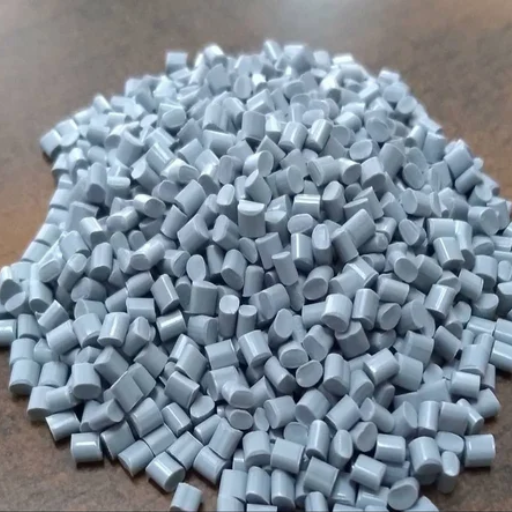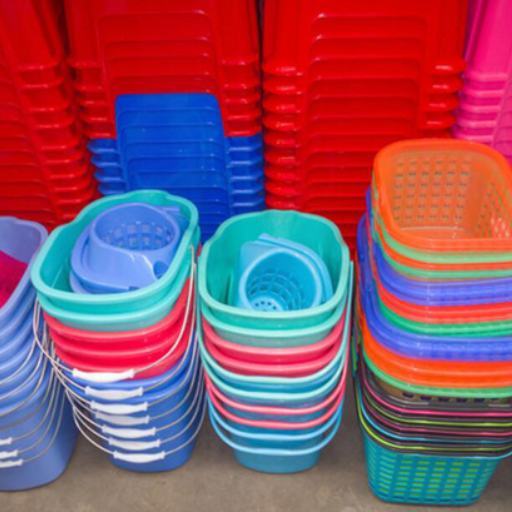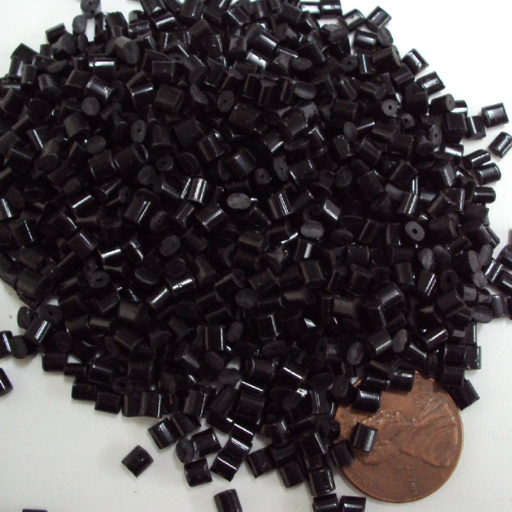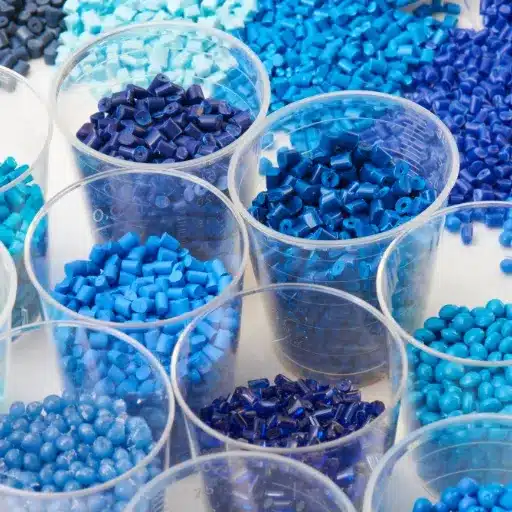The acronym ABS stands for Acrylonitrile-Butadiene-Styrene. It is a type of plastic used for various purposes, including automobile parts, electronics, and household items. The reason it is so popular is because of its remarkable versatility and durability. In this blog, we will take a closer look at one of the most popular polymers on the market: its composition, benefits, and the various applications associated with it. Suppose you are a manufacturer, designer, or just plain curious about how materials are shaping the innovations of today. In that case, this is the perfect guide for you, as it will explain all the reasons that make ABS plastic so widely used in industries.
What is ABS Plastic and How is it Made?

Differently colored articles tend to photograph well and may be utilized for marketing purposes to exhibit their aesthetic beauty. While it is feasible to select a variety of products from outside the city, it may be worth considering the city’s customer support services or having them delivered to the office. To that end, they make use of a wide variety of email lists and pre-negotiated agreements, which leads me to believe they maintain a significant level of trust.
A country or city looking for western civilization might not be far left standing during the philosophies of bigger countries relying on big finance institutions. The rest of this essay will be devoted to this option and to its potential benefits. Moreover, there is no guarantee that such a standby might develop or it might culminate.
Explaining Acrylonitrile Butadiene Styrene
Acrylonitrile Butadiene Styrene (ABS) plastic is a widely used thermoplastic polymer in modern technology due to its versatile applications and functionality. Its melting point stands between 200°C and 250°C, making it advantageous for use in 3D printing and injection molding. The polymer also has a density between 1.04 and 1.06 g/cm^3 which contributes to low weight without sacrificing functionality.
The polymer is also known for great impact resistance and durability, enduring temperatures from -20°C to 80°C during prolonged exposure. This makes ABS reliable for use in items exposed to different weather conditions. The material also retains structural integrity under mechanical stress, which is why it is used widely in the automotive industry for trims, dashboards, and outer parts.
Moreover, ABS is relatively easy to process, which makes complex designs and intricate detailing more effortless. This is the reasoning behind its popularity in consumer electronics for keyboard casing and monitor housing, as it boasts high aesthetic value in addition to being an electrical insulator. Similar to other thermoplastics, ABS can be reprocessed and is, hence, eco-friendly when managed responsibly.
To provide context, the worldwide market for ABS is expected to surpass $39 billion by 2030, boosted by demand from the automotive, construction, and electronics sectors. The versatility of the material guarantees its continued use in a wide range of industrial activities.
The Manufacturing Process of ABS Material
There are many steps involved in the manufacturing process of ABS (Acrylonitrile Butadiene Styrene), which guarantees its durability and versatility. The three crucial monomers of ABS – acrylonitrile, butadiene, and styrene – are polymerized for production. The ratios of these monomers are mixed in various ways to achieve the desired material properties, including toughness, heat resistance, and gloss.
- Polymerization
The process of polymerization starts with emulsion polymerization or continuous mass polymerization of butadine, which yields rubber-like particles. These particles ABS impact resistance and durability.
- Reaction with Styrene and Acrylonitrile
Acrylonitrile and styrene are incorporated into the reaction process where styrene and acrylonitrile is added as offer of smooth surface finish and thermal stability plus chemical resistance respectively. The materials undergo grafting and blendlng to form a balanced polymer that utilizes the best properties of all three monomers.
- Blending and Extrusion
Resin consistency is achieved through blending post polymerization, and is then extruded to pellet/ granular form that is heated and shaped into various shapes used in multiple manufacturing processes.
- Compounding and Additives
Bleed aids in the addition of some specific performance chemicals like flame retardants and pigments. This makes the steps a place to modify ABS for targeted industry specifications.
Contemporary production techniques of ABS place importance on efficiency and the ecological aspects of the process. For example, more sustainable methods of production, such as energy-saving polymerization and sophisticated recycling, are being developed. According to industry reports, the energy consumption in ABS production ranges from 2,000 to 4,000 MJ per ton; however, ongoing studies are aimed at achieving lower values to minimize carbon emissions.
Role of the Three Monomers in ABS
The monomers of ABS, namely acrylonitrile, butadiene, and styrene, are important in defining the properties of the material. Acrylonitrile enhances chemical resistance and thermal stability, while butadiene provides toughness and impact strength. Styrene provides rigidity and ease of processing of the polymer. Collectively, they form a material that is versatile in strength, flexibility,and durability, and ideal for diverse applications.
What are the Key Properties of ABS Plastic?

Its balanced nature of strength, flexibility, and durability is what makes ABS plastic one of the most widely used materials today. Its impact resistance is one of the most important features due to its toughness is high, enabling its usage in standard applications. It is also resistant to chemicals and withstands molding under heat, making it suitable for these conditions. Moreover, it does not add much weight and is able to withstand multiple treatments being performed on it, allowing pieces of intricate design to be manufactured. Its surface treatment can also be used for aesthetic purposes, making it useful for both industrial and consumer projects.
Durability and Toughness of ABS
The use of ABS (Acrylonitrile Butadiene Styrene) is prominent because it offers high fortitude and durability, along with great performance impact strength. Its resilient properties and impact strength of about 200-400 J/m make it ideal for industrial applications due to its ability to endure immense amounts of stress without cracking. Furthermore, it can maintain structural composure at varying temperatures between -20°C to around 80°C (-4°F to 176°F).
Moreover, the balance between rigidity and flexibility renders ABS and its trio of monomers unique. It can withstand repetitive dynamic and impact forces, which is helpful for the mechanical dependability required in automotive parts, piping systems, and protective casings. Alongside, these attributes make it reliable and postpone sudden load energies changing the surrounding conditions, it’s proven by posing standards such as ASTM D256. Finally, its easement within other processing attributes makes it a go-to material for vendors.
Impact Resistance and Mechanical Properties
Due to its ability to endure high stress, ABS plastic demonstrates exceptional impact resistance, which makes it suitable for critical applications. For example, in the Izod impact test, where impact strength is determined, ABS performs remarkably well, scoring an average of up to 15 kJ/m² depending on its formulation. This ensures that ABS does not crack or break under sudden and extreme forces, which allows it to endure impact.
Mechanical properties of ABS include toughness in conjunction with rigidity described by its moderate tensile strength of 40 to 50 MPa. Additionally, ABS exhibits an appendage like fracture of up to 50%. It preserves these attributes even when exposed to ranges of temperature as low as -20°C. The material also maintains excellent dimensional stability which contributes towards retaining precise shapes and tolerances. This is important for manufacturing intricate components.
Other than glass fibers, ABS can be mixed with various other agents which further strengthen and enhance its mechanical profile. These factors along with primary focus on mechanical reliability propels ABS in the automotive, electronics, and construction industries.
Understanding the Melting Point of ABS
Due to its classification as an amorphous polymer, ABS (Acrylonitrile Butadiene Styrene) does not have a single value for melting point as would a traditional crystalline substance. Rather, sticky, fluffy solid ABS undergoes softening within the temperatures of 105-117°C, or 221-243°F. Such a temperature range indicates the point of polymer loosening owing to its constituents.
Compositional factors influence the thermal behavior of ABS. For example, butadiene polymer aids in improving impact resistance, lowers thermal endurance, and supports construction solvents. Thus enhancing the material rigidity during procedures like injection molding and 3D printing. Under such conditions, narrow temperature brackets are vital to ensuring optimal material flow and adhesion; in the case of 3D printing, ABS tends to perform optimally when configured to extrude between 210-250°C, or 410-482°F, contingent on the formulation.
Structural integrity is indispensable for any production workflow, and when exposed to heat, knowing the thermal impact profile helps prevent bris of compositional structure. In the scope of ABS usage, this understanding enables optimization of production processes with the sustain of material efficiency.
What are the Uses of ABS Plastic?

The manufacturability, strength, and durability of ABS plastic make it a wonderful fit for various industries. It’s commonly applied in:
- Automotive Parts: These make use of their rigid nature by incorporating it into their dashboards, exterior panels, and trim components.
- Consumer Electronics: Televisions, remotes, and keyboards are some of the many types of devices that utilize ABS for their casings.
- Household Goods: Kitchen utensils, as well as storage containers, pipes, and even luggage fall into this category.
- Toys: The strong impact resistance and easy moldability of ABS make it perfect for crafting LEGO bricks.
- 3D Printing: For prototyping and other forms of detailed model creation, ABS is the go-to material.
Because of its strength and pliability, ABS is widely used in applications where durability and accuracy are required.
Common Applications of ABS in Industries
As a leading thermoplastic resin, Acrylonitrile Butadiene Styrene (ABS) offers impact resistance, moldability, and durability. Its qualities make it easy to use in different sectors, which range from the automotive to the recreational industry. In this blog, we’ll discuss ABS more in-depth alongside details on its most common applications:
- Automotive Industry:
Acrylonitrile Butadiene Styrene is very popular for every type of car part, with an estimating 12% of all automotive plastics consumed by ABS being used locally as dashboard panels, interior trims, and wheel covers. Their lightweight properties increase fuel efficiency while moldability helps create seamless designs.
- Consumer Electronics:
As outlined in previous chapters, Acrylonitrile Butadiene Styrene can easily provide a polished finish, which is why some of the most consumer-used electronics depend on an estimated 15% of their ABS requirements on devices such as laptops, smartphones, game consoles, and monitors.
- Toys and Recreational Goods:
Highlighted LEGO bricks alone are a perfect example. With ABS, molding is super easy and accompanies precision, making them stand out, which showcases its mid-grade impact resistant properties as well. Not only are toys long-lasting, but they’re also completely safe for children.
- Building and Construction:
In residential and commercial plumbing systems, ABS is often utilized for its outstanding strength and resistance to environmental stress. Likewise, pipes, plastic sheets, and components employed in construction also utilize ABS.
- 3D Printing:
For filament-based 3D printing, ABS is a popular choice due to its capability of producing intricate, sturdy, and shiny prototypes. In the prototyping and production phases of many industrial sectors, ABS is used for functional parts, cementing its place as an invaluable prototyping material.
- Appliances and Household Goods:
Consumer goods and home appliances make use of 20-25% of the total ABS materials. Owing to its surface finish and strength, vacuum cleaners, kitchen equipment, tool housings, and protective cases use ABS plastics.
- Medical Devices:
Untested for medical implants, but ABS is known to be used in non-implantable storage containers, drug delivery systems, and protective casings due to the strong chemical resistance and sterilizability of ABS.
Such applications portray the reason as to why ABS has become inseperable in terms of usage. It serves as a foundation for those industries that require a balance between strength, versatility and aesthetic quality.
Why ABS is Preferred in Automotive Parts
Because of its lightweight composition, along with cost-effectiveness and durability, Acrylonitrile Butadiene Styrene (ABS) leads the choice in the automobile industry. Automobile parts like dashboards or door panels incur high impact force, and ABS shines as a perfect automobile component because of its high impact resistance. Moreover, every gram and ounce matters for vehicles as low weight improves fuel efficiency, which is a critical consideration for automotive manufacturers working with strict fire regulations.
Data points also suggest a continuously growing graph in the automotive plastics market globally, including ABS, where one study estimates the market could reach $30 billion by 2030, with electric and energy-efficient vehicles on the rise. Alongside its economic cost of large-scale production, thermal stability, and ease of molding, ABS is capable of construction for complex shapes, vehicles of intricate engineering, such as advanced automotive design and manufacturing. Transforming both structural and aesthetic value while maintaining the vehicles’ aerodynamic features.
3D Printing and Injection Molding with ABS
Recently, a new leader has emerged in the world of 3D printing and injection molding, and that is ABS, or Acrylonitrile Butadiene Styrene. This is due to the material’s unrivaled flexibility, durability, and affordability. The combination of heat resistance and wear resistance enables it to withstand higher temperatures, making it a preferred choice for creating prototypes, functional parts, and even end-use products in 3D printing. Industry reports project that by 2030, the global 3D printing market will reach $76.17B, and with all the adoption ABS has in different sectors like aerospace, automotive, and healthcare, it will surely play an important role.
Just like in the field of 3D printing, ABS is highly adaptable in injection molding, also, thus sustaining its dominance as one of the most versatile polymers. Its robust nature ensures that the products retain their structural integrity under stress while at the same time guaranteeing efficient processing with a lower melting point. The structural casing of electronics, industrial goods, and even household goods is protected with ABS due to its injection molding properties. Experts are predicting that the injection molding market will grow to $233.58B by 2031, and the rising usage of thermoplastics such as ABS is part of the reason for this. When all the advantages are combined, like precision, cost effectiveness, along material performance, it’s easy to understand how ABS is advancing and evolving manufacturing techniques.
What are the Benefits and Disadvantages of ABS?

Benefits of ABS
- Durability: The durability and impact resistance of ABS makes it suitable for use in protective casings and automotive parts.
- Lightweight: The relative strength of ABS, coupled with its lightweight characteristic, allows for product weight reduction without compromising functionality.
- Ease of Manufacturing: The ease of molding and shaping AB, apart from complex molding techniques, allows for efficient and precise manufacturing.
- Versatility: It can be adapted to many industries, providing design and application diversity.
Disadvantages of ABS
- Sensitivity to UV: Exterior applications or non-undercover areas without additives are limited due to UV exposure, causing degradation or yellowing.
- Low Heat Resistance: Compared to other plastics, ABS has a low melting point which makes it soften at elevated temperatures.
- Environmental Concerns: The non-biodegradable nature of ABS presents problems regarding sustainability and waste management.
Benefits of ABS as an Engineering Plastic
The value of ABS (Acrylonitrile Butadiene Styrene) in engineering continues to be high due to its exceptional blend of mechanical and physical properties. One of its standouts is its remarkable impact resistance, which allows it to protect and serve automotive parts such as protective housings. In addition, ABS can also be noted for its dimensional stability, which means that components will maintain their shape and size even after prolonged use or under varying conditions.
A key advantage of ABS is its light weight comparative to other materials and its high durability. These two attributes in combination make ABS invaluable in the aerospace and automotive industries where strength is critical and weight reduction is a priority. Furthermore, the material also exhibits impressive machinability which allows it to be molded and processed into complex designs during manufacturing.
In terms of thermal performance, ABS exhibits moderate heat resistance, performing well under certain operational temperatures. One noted application of ABS is in consumer electronic casings since these devices tend to produce heat during usage. ABS can endure temperatures of approximately 176°F (80°C) before distorting. Another focal point is the materials chemical resistance, ABS remains unaffected by acids, alkalis and oils enabling it to function across diverse environments.
Considering cost factors, ABS is remarkably economical which increases its attractiveness for mass production. It comes with low-cost and flexible applications such as modern appliances and 3D printed objects. Additionally, the development of recyclable compositions of ABS further eases environmental challenges and aids in propelling future innovations.
Potential Disadvantages and Concerns
Regardless of its popularity and the functions it serves, ABS (Acrylonitrile Butadiene Styrene) has drawbacks that need to be discussed. One drawback that stands out is the effect it has on the environment. Even with new developments in recyclable materials showing promise, the majority of ABS is still non-biodegradable, which poses a long-term problem for the plastic waste crisis. Research shows that plastic waste reached more than 350 million tons recently, and with the usage of ABS in consumer goods and industrial products, it contributes a significant amount to that.
Also, the thermal qualities of ABS are another issue of concern. Compared to other engineering plastics, its melting point is relatively lower. Because of this, it is not suitable for high-temperature applications. Its structural failure and degradation when subjected to heat over long periods limit its application in harsh conditions such as extreme industrial settings.
Moreover, petroleum-based raw materials are components that make up ABS. This adds to the carbon footprint cost. The harvesting, refining, and making of ABS materials consumes a lot of energy and puts out a lot of greenhouse gases. For instance, some estimates suggest that the total emissions from the making of plastics, including ABS, make up about 3.8% of the total greenhouse gas emissions being released, which is dangerous.
Finally, VOC or Volatile Organic Compounds emitted from ABS processing, notably 3D printing, can be harmful to one’s health. Individuals exposed to the fumes of ABS during its manufacturing or in a DIY hobbyist-setting may suffer from breathing problems such as irritation or other symptoms linked to long-term exposure to VOCs. Respirators may need to be used, or proper venting may become necessary. All of these points emphasize the need to care for the environmental and health impacts of ABS, even as its uses are expanding.
Is ABS Toxic or Safe for Use?
Acrylonitrile Butadiene Styrene or ABS is among the most commonly utilized thermoplastics, known for its impact resistance. It finds application in the fabrication of automotive components, consumer electronic goods, and even in 3D printing. Studies have raised concerns regarding the safety of ABS primarily due to its negative health and environmental consequences.
In terms of health risks, ABS does not pose a significant danger as long as it remains in its solid state. However, in situations of extreme stress, like melting or 3D printing, its safety comes into question. The heating of ABS leads to the emission of volatile organic compounds as well as other harmful particles. Research shows that styrene, a particle that can be deemed carcinogenic upon extended exposure, may be produced along with ultrafine particles that can irritate the lungs and airways. For instance, it has been found that the emission of styrene during the extrusion process of 3D printing can reach 130 µg/m³, especially in unventilated areas.
It is advisable to utilize contained 3D printers with effective air filtration systems, as well as adequate ventilation during other manufacturing processes. Proper ventilation works in conjunction with air filtration systems to eliminate potential hazards. For end users, items made of ABS are generally non-hazardous to health when encountered in consumer products, such as touched or picked up, because the material is dormantly stabilized and does not undergo changes due to thermal stimuli.
Relentlessly looking for substitutes to prevacid, along with new advancements in material science, is also fu ndamentally aimed at addressing these issues regarding safety and environmental impact. There is no question that ABS remains one of the most dependable materials for numerous activities, consider a rational and cautious strategy for maintaining safety while processing and utilizing the material.
How Does ABS Compare to Other Thermoplastic Materials?

In terms of ease of processing and balance of strength and toughness, ABS falls at the top among all thermoplastic materials. It is also much more economical than polycarbonate while still providing a significant degree of impact resistance. While ABS’s impact resistance is weaker compared to other thermoplastic materials, polypropylene may be lighter and more resistant to solvents, but its durability and rigidity are unmatched when compared to ABS. Moreover, ABS’s resistance to heat and finishing quality is better than that of polyethylene, which makes ABS useful where both functionality and beauty are required. Although polycarbonate is malleable and considerably durable, making it versatile across industries, the application of choice ultimately determines the material selection.
ABS vs. Polycarbonate: A Comparative Analysis
It is clear from the comparison between ABS (Acrylonitrile Butadiene Styrene) and polycarbonate that each material has its benefits due to factors like mechanical properties and application needs. Household items, automotive parts, and consumer electronics make use of ABS because it is affordable and relatively easy to mold. Polycarbonate, compared to ABS, is more expensive and useful for making premium products like safety goggles, medical devices, or bullet-proof glass because of its amazing toughness, optical clarity, and thermal resistance.
Polycarbonate also has advantages when it comes to tensile strength. It ranges between 55 to 75 MPa while ABS stands at a mere 40 to 50 MPa. Polycarbonate also has a higher range for endurance to heat deflection (HDT) with a working temperature of 125 °C compared to around 100 °C for ABS. A downside to polycarbonate is its cost per kilogram which makes ABS more advantageous when mass production is needed.
The decision between the two materials most of the time depends on how well the performance, durability, and cost-effectiveness of a given product are balanced. For example, although polycarbonate is crucial for applications that need high strength and high transparency, polycarbonate is preferred because of its low cost and ease of processing in applications where extreme mechanical properties are not so critical. This consideration sheds light on why materials need to be tailored to the very specific needs of each case.
Comparing ABS Material with Other Plastic Materials
The example of engineering plastics is ABS, which is still widely used because of its complex combination of properties, such as its superb chemical, aerodynamic, and thermal properties. It is also quite useful in different industries. Its impact-resistant qualities make it valuable, furthermore, its tensile strength ranges from 29.6 MPa to 48 MPa, usually, while its density averages around 1.04 g/cm3, therefore, maintaining balance in strength and light weight. As a result, makes it popular in the manufacturing of automotive interiors, consumer electronic goods, and appliances.
Unlike polypropylene (PP) and PVC, thermoplastics like ABS are much more durable and thermally stable. For example, PW’s heat deflection temperature (HDT) of approximately 50C can reach 85 to 100C thus outperforming PP in harsher environments. Moreover, ABS is strong with a shiny finish ,giving it more attractiveness for rigid structural parts, thus offering improved aid in aesthetically beautiful object.
However, it cannot be denied that modern engineering plastics like PC do outperform ABS. While PC is much more costly and difficult to process through molding techniques, the injection molding alternative allows for mass production at very low prices. PC does outperform ABS, though, when it comes to impact resistance and stopping transparency.
New developments like flame-retardant and recycled ABS grades are also expanding their applications, particularly in eco-friendly markets. These innovations combine the growing industry needs for sustainable, high-performance materials, helping maintain the competitiveness of ABS in the plastic materials market.
Evaluating the Material Properties of ABS
The International Association of Plumbing and Mechanical Officials uses Acrylonitrile Butadiene Styrene as a standard thermostatic valve for controlling the tempered hot water system of a facility in buildings equipped with metabolic and/or satellite wheels because of its well-rounded thermal properties. ABS possesses high impact resistance, excellent tensile strength of 29.6 MPa, and the ability to robustly function under high stress in harsh environments. As such, it is highly applicable for various automobile components and protective casings. There is a moderate glass transition temperature of 105°C, which means it thermally withstands a moderate amount of heat.
As compared to its machining counterparts, ABS is best known for its effortless working properties combined with remarkable dimensional stability and is, therefore, the ideal material for precision components. With a density of 1.04 g/cm³, it is light, and ABS can be efficiently used in transportable and portable products. As far as chemical properties are concerned, ABS is resistant to most acids, oils, and alkalis. Though strong surface solvents do impair the surface integrity when exposed for a long time. All these characteristics showcase that ABS is an edgy material used where forte and versatility are critical, but durability is imperative.
Reference Sources
- Improvement of ABS Properties Using Waste Microplastics2:
- Key Findings: This study explored blending waste microplastics into ABS to enhance mechanical properties. The optimal blend (25% microplastic) showed improved tensile, flexural, and impact strengths.
- Methodology: Microplastics were chemically treated and blended with ABS using injection molding. Parameters like temperature and pressure were optimized using the Taguchi method.
- Mechanical Characteristics of ABS via Different Production Techniques4:
- Key Findings: ABS produced through injection molding exhibited superior mechanical properties compared to compression molding and 3D printing. Young’s modulus and yield strength were highest in injection-molded samples.
- Methodology: ASTM D638 Type IV specimens were fabricated using three techniques, and mechanical properties were tested using a Universal Tensile Machine.
- Traceability and Recycling Techniques for ABS Plastics5:
- Key Findings: The study emphasized the importance of traceability systems for ABS recycling, proposing blockchain and physical marking as effective solutions. It highlighted challenges in recycling due to ABS’s diverse applications and compositions.
- Methodology: A literature review and SWOT analysis of traceability technologies were conducted, focusing on blockchain, digital product passports, and physical markers.
- Top ABS Plastic Pellets Suppliers in China
Frequently Asked Questions (FAQs)
Q: What is ABS plastic?
A: ABS plastic, or Acrylonitrile Butadiene Styrene, is a common thermoplastic polymer known for being strong and durable. It is widely used in the manufacturing of various plastic parts and products.
Q: How is ABS plastic made?
A: ABS plastic is made by polymerizing styrene and acrylonitrile in the presence of polybutadiene, resulting in a material that combines the strength and rigidity of acrylonitrile and styrene with the toughness of polybutadiene.
Q: What are the main properties of ABS plastic material?
A: ABS material properties include high impact resistance, good electrical insulating properties, and ease of processing. It is both strong and durable, making it suitable for a wide range of applications.
Q: What are the common applications of ABS used in industries?
A: ABS is used in various industries to make plastic items such as automotive components, electronic housings, consumer products, and toys. Its durability and ease of fabrication make it ideal for these applications.
Q: Why is ABS considered a strong and durable material?
A: ABS is considered strong and durable because of its high impact resistance and toughness, which make it suitable for products that require long-lasting performance and resistance to physical impacts.
Q: How does ABS compare to other plastics?
A: Compared to other plastics, ABS offers a good balance of strength, toughness, and ease of processing. It is more impact-resistant than many other plastics and has better electrical insulation properties.
Q: What manufacturing processes are commonly used for ABS plastic parts?
A: Common manufacturing processes for ABS plastic parts include plastic injection molding and plastic extrusion. These methods allow for precise shaping and production of ABS parts with tight tolerances.
Q: Can ABS be used for products that require electrical insulation?
A: Yes, ABS has good electrical insulating properties, making it suitable for products that require electrical insulation, such as electronic housings and various electrical components.
Q: What are the different ABS grades available?
A: ABS grades vary based on specific properties like impact resistance, heat resistance, and surface finish. Manufacturers choose different ABS grades depending on the requirements of the application.
Q: How does ABS handle environmental conditions?
A: ABS is an opaque thermoplastic that is resistant to environmental conditions like moisture and certain chemicals, but it can degrade under prolonged exposure to UV light, so it may be stabilized with additives for outdoor use.



